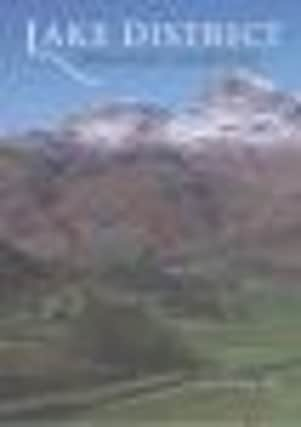Book review: Lakes District Mountain Landforms by Peter Wilson


Not so, asserts Lancashire-born geologist Peter Wilson in an enthralling new book that takes us deeper into the famous National Park than most of us have ever travelled.
With the help of our eminent guide, we dig below the surface of the dramatic landscape, bore into its famous rocks and wing our way back through millions of years of its geographical history.
Advertisement
Hide AdAdvertisement
Hide AdThis is a journey of discovery that paints a very different picture to that revered by poets like Wordsworth and Coleridge, and artists like Turner and Constable.
The timeless and addictive beauty remains – not least in Wilson’s gallery of stunning photographs - but we learn how to appreciate the Lake District’s provenance, those climactic events that shaped its landforms and underpin the basic structure of what we see today.
The area’s geological roots are often glossed over in books as merely the imprint of ancient glaciations but a closer look reveals key locations where both freezing and thawing have left their mark, where hill slope activity and river action have created astonishing vistas and where new features are still being created today.
Concerns about global warming have revived interest in changes to the Earth’s surface and Wilson’s book encourages us to see our planet as a dynamic rather than static backdrop to our lives.
Advertisement
Hide AdAdvertisement
Hide AdAs you walk the fells and valleys, have you ever wondered why Skiddaw is so different from Helvellyn, why Scafell Pike has numerous boulders and High Street doesn’t and why Wast Water is so unlike Windermere?
Wilson explains all and, in the process, gives his readers a new perspective on the Lakes.
Impress your walking companions by pointing out important landforms like hanging valleys, cirques, erratics, morraines, blockfields, fan-deltas and even a braided gravel-bed channel.
Buttermere, apparently, is a classic glacial trough and the col (mountain pass) which contains renowned Blea Tarn was formed when the Great Langdale glacier breached its watershed.
Advertisement
Hide AdAdvertisement
Hide AdThe earliest volcanic rocks, meanwhile, can be found to the east of Mungrisdale, in Eycott Hill, and across a narrow area around Skiddaw, while exposed volcanic ash is still clearly visible in the former quarry on Castle Crag in Borrowdale.
The lakes owe their existence to valley floor erosion by glaciers and the area’s notorious prolonged rainfall keeps them well stocked with water via streams and rivers.
Man has also made changes to the Lakeland landscape. Thirlmere, originally two small lakes, was dammed in the 19th century to make one very wide and deep lake so that it could be used as a reservoir to provide water for the citizens of Manchester.
Wilson’s beautifully packaged book, full of facts, figures, photographs and diagrams, allows us to view the Lake District as a veritable mosaic of landforms, each with its own history and each with a fascinating relationship to adjacent features.
Advertisement
Hide AdAdvertisement
Hide AdWith careful observation, and Wilson’s 20 years of loving research and fieldwork, visitors and fell walkers can now tease out the full story behind those breathtaking mountains and magnificent lakes.
(Scotforth Books, hardback, £20)